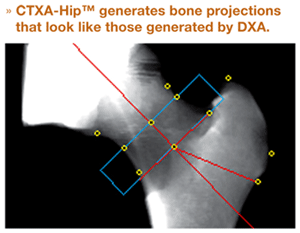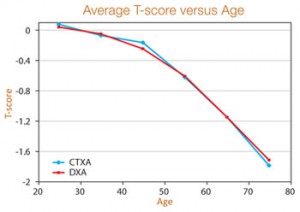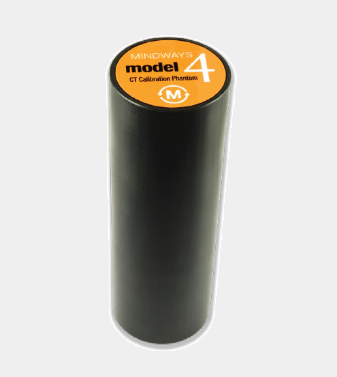CTXA-Hip™
CTXA (Computed Tomography X-Ray Absorptiometry) enables you to produce DXA-equivalent hip measurements— including for usage with WHO criteria for fracture-risk assessment—from a CT volumetric data set.
Physicians familiar with interpreting DXA reports will instantly understand how to use CTXA in the diagnosis of osteoporosis and low bone mass conditions.

CTXA studies are fast and easy. Scan times are typically under ten seconds and the automated analysis takes about one minute. Total study times of less than ten minutes are easily atainable. The hip and spine can also be scanned at once for further efficiency.
Exploits the 3D data set to go beyond DXA. Besides areal BMD estimates, CTXA provides volume density in each of the standard DXA ROIs, along with separate cortical and trabecular bone compartment areal and volume density estimates (not available from DXA).
Features at a glance
- Bone mineral analysis of the proximal femur.
- FRAX®-compatible bone density measurements.
- Bilateral hips from a single scan.
- Helical scans in seconds.
- Highly automated analysis in 1–2 minutes.
- Clinically equivalent to DXA: Identical areal measurements and ROIs, as well as comparable T-scores.
- Precision: 0.7%; 1.1% long-term total hip; 1.2% long-term femoral neck.
- Volumetric BMD estimates provided in addition to standard DXA-equivlalent areal density measurements.
- Separate pseudo-cortical and pseudo-trabecular bone compartment density measurements (areal & volume estimates).
Comparison of CTXA and DXA Proximal Femur Reference Data

Normalizing the CTXA data to the DXA data results in an approximate relationship between CTXA and DXA BMD estimates of:
BMD-DXA = 0.998 * BMD-CTXA + 0.013 g/cm2
* Looker AC, Orwoll ES, Johnston CC, Lindsay RL, Wahner HW, Dunn WL, Calvo MS, Harris TB, Heyse SP. Prevalence of low femoral bone density in older U.S. adults from NHANES III. J Bone Miner Res 1997; 12: 1761-1768

